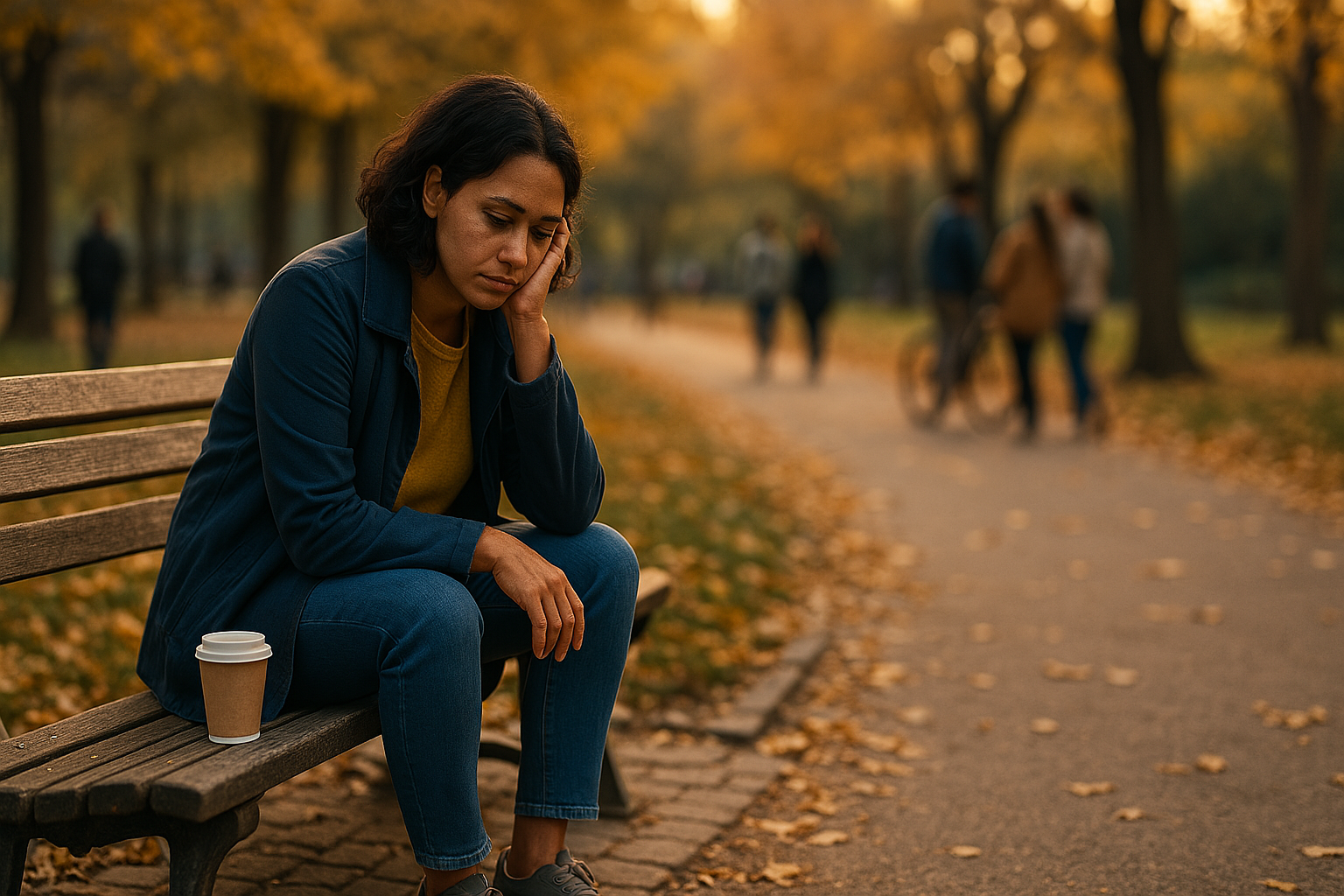Americans are more connected than ever—so why do so many feel utterly alone? With smartphones, social media, and virtual meetings just a tap away, you’d think we’d never feel isolated. But beneath the surface of constant notifications and status updates lies an unsettling truth: Loneliness in America is quietly becoming a full-blown public health crisis.
According to a 2023 study by the U.S. Surgeon General, nearly 1 in 2 adults report feeling lonely on a regular basis. That’s not just sad—it’s dangerous. Loneliness doesn’t just tug at your heartstrings; it can shrink your lifespan, mess with your brain, and increase your risk of serious illnesses. So how did we get here—and what can we do about it?
The Rise of the Loneliness Epidemic
We’re living through what many experts are calling the loneliness epidemic, a term that’s gained traction in headlines, healthcare forums, and even TED Talks. But this isn’t just a trending topic. It’s a cultural shift.
More Connected, Yet More Isolated
- 72% of Americans use social media daily (Pew Research Center, 2024)
- Remote work has surged post-pandemic, cutting off daily in-person interactions
- Neighborhood communities are less active than they were decades ago
While these changes brought convenience, they’ve chipped away at human connection. Digital communication can never fully replace face-to-face interaction—and our brains know it.
The Role of Technology in Disconnection
Let’s face it: doomscrolling isn’t the same as deep conversation. We’re replacing quality interactions with quick dopamine hits. Apps are engineered to keep us scrolling, not connecting. So while we may rack up likes and comments, we’re starving for real emotional connection.
How Loneliness Hurts Your Health
Loneliness in America isn’t just an emotional state—it’s a health hazard. The Centers for Disease Control and Prevention (CDC) reports that chronic loneliness can be as damaging as smoking 15 cigarettes a day. That’s not just poetic—it’s medically alarming.
Physical Effects of Loneliness
- Increased risk of heart disease and stroke
- Weakened immune system
- Higher inflammation levels in the body
- Poorer sleep quality
Mental Health and Cognitive Decline
Lonely individuals are more likely to experience:
- Depression and anxiety
- Memory issues
- Accelerated cognitive decline in older adults
- Suicidal thoughts
As Dr. Julianne Holt-Lunstad, a psychology professor at Brigham Young University, puts it: “The lack of social connection heightens health risks as much as obesity or physical inactivity.”
“Loneliness in America is not just about being alone—it’s about the dangerous absence of meaningful connection.”
The Impact on Young Adults
Surprisingly, the most digitally connected group—young adults aged 18-24—report the highest levels of loneliness. That’s right. Despite hundreds of Instagram stories and TikTok loops, this generation is feeling the sting of social isolation more than any other.
What’s Being Done About It?
The good news? We’re finally talking about it. In 2023, U.S. Surgeon General Dr. Vivek Murthy released an 85-page advisory on the loneliness and social isolation crisis in the country, calling for it to be treated with the same urgency as other major public health threats.
National and Local Initiatives
- Public Awareness Campaigns: Highlighting the dangers of loneliness and encouraging community connection
- Community Programs: Libraries, parks, and nonprofits are creating spaces for social interaction
- Corporate Wellness Programs: Companies are starting to promote in-person meetings and mental health check-ins
Individual Strategies That Actually Work
You don’t need a massive friend group to combat loneliness—just consistent, quality connection. Here are a few science-backed ways to reconnect:
- Join local clubs or volunteer groups
- Schedule regular calls or coffee dates
- Limit social media time and increase face-to-face interactions
- Practice active listening in your relationships
Rebuilding Connection in a Disconnected World
It’s time to rethink how we measure connection. Followers aren’t friends, and emojis aren’t hugs. If we want to reverse the course of Loneliness in America, we need to prioritize presence over perfection.
Embrace Small, Meaningful Moments
You don’t need a grand gesture. A smile to your barista, a five-minute chat with a neighbor, or a walk with a friend can make a lasting impact on your well-being.
Can Technology Be Part of the Solution?
Ironically, yes. When used intentionally, technology can help people stay connected across distances. Zoom family dinners, long-distance friend groups, and mental health apps like BetterHelp and Headspace are tools—not replacements—for real human connection.
FAQ – Frequently Asked Questions
What is the main cause of Loneliness in America?
It’s a mix of increased screen time, decreased face-to-face interaction, remote work, and urban lifestyles. Our fast-paced, tech-driven lives often leave emotional connection behind.
Is Loneliness in America worse now than before the pandemic?
Yes. Studies show that loneliness levels have risen significantly since COVID-19, with younger and older adults reporting the most severe effects.
Can loneliness really make you physically sick?
Absolutely. Chronic loneliness has been linked to heart disease, weakened immunity, and even shorter life expectancy.
What age group is most affected by Loneliness in America?
Young adults (18–24) currently report the highest rates, followed by seniors over 65.
How can I help someone who feels lonely?
Start small: reach out, listen actively, invite them to connect. Sometimes, just showing someone they matter is the most powerful medicine.
References
- U.S. Surgeon General. (2023). Our Epidemic of Loneliness and Isolation: The U.S. Surgeon General’s Advisory
- CDC. (2023). Loneliness and Social Isolation Linked to Serious Health Conditions
- Pew Research Center. (2024). Social Media Use in 2024
- Holt-Lunstad, J. (2015). Loneliness and Social Isolation as Risk Factors for Mortality (Meta-analysis)
Want more inspiring content and exclusive lifestyle tips? Follow us on Instagram @nomadicbalanceblog for daily inspiration and first access to our latest guides.

